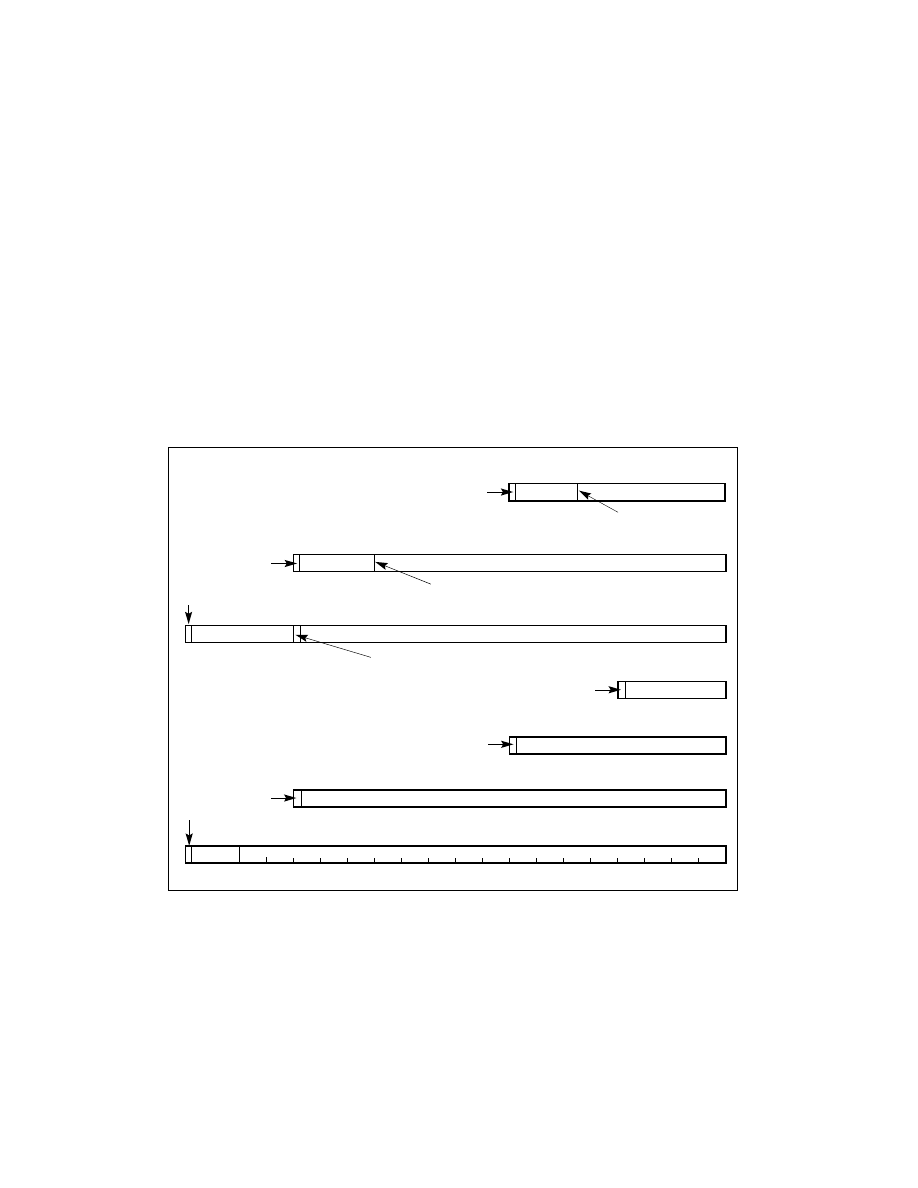
Vol. 1 8-13
PROGRAMMING WITH THE X87 FPU
8.2
X87 FPU DATA TYPES
The x87 FPU recognizes and operates on the following seven data types (see Figures 8-13): single-precision
floating point, double-precision floating point, double extended-precision floating point, signed word integer,
signed doubleword integer, signed quadword integer, and packed BCD decimal integers.
For detailed information about these data types, see Section 4.2.2, “Floating-Point Data Types,” Section 4.2.1.2,
“Signed Integers,” and Section 4.7, “BCD and Packed BCD Integers.”
With the exception of the 80-bit double extended-precision floating-point format, all of these data types exist in
memory only. When they are loaded into x87 FPU data registers, they are converted into double extended-preci-
sion floating-point format and operated on in that format.
Denormal values are also supported in each of the floating-point types, as required by IEEE Standard 754. When a
denormal number in single-precision or double-precision floating-point format is used as a source operand and the
denormal exception is masked, the x87 FPU automatically normalizes the number when it is converted to double
extended-precision format.
When stored in memory, the least significant byte of an x87 FPU data-type value is stored at the initial address
specified for the value. Successive bytes from the value are then stored in successively higher addresses in
memory. The floating-point instructions load and store memory operands using only the initial address of the
operand.
As a general rule, values should be stored in memory in double-precision format. This format provides sufficient
range and precision to return correct results with a minimum of programmer attention. The single-precision format
is useful for debugging algorithms, because rounding problems will manifest themselves more quickly in this
format. The double extended-precision format is normally reserved for holding intermediate results in the x87 FPU
registers and constants. Its extra length is designed to shield final results from the effects of rounding and over-
flow/underflow in intermediate calculations. However, when an application requires the maximum range and preci-
sion of the x87 FPU (for data storage, computations, and results), values can be stored in memory in double
extended-precision format.
Figure 8-13. x87 FPU Data Type Formats
0
Packed BCD Integers
79
D0
0
Quadword Integer
63
4 Bits = 1 BCD Digit
0
Doubleword Integer
31
0
Word Integer
15
Sign
D1
D2
D3
D4
D5
D6
D7
D8
D9
D10
D11
D12
D13
D14
D15
D16
D17
78
72 71
X
62
14
30
0
Double Extended-Precision Floating-Point
79
Sign
78
6463
0
Double-Precision Floating-Point
63 62
0
Single-Precision Floating-Point
3130
23 22
Fraction
Exp.
Sign
Implied Integer
Implied Integer
Sign
Exponent
Fraction
52 51
Fraction
Exponent
62
Integer
Sign
Sign
Sign